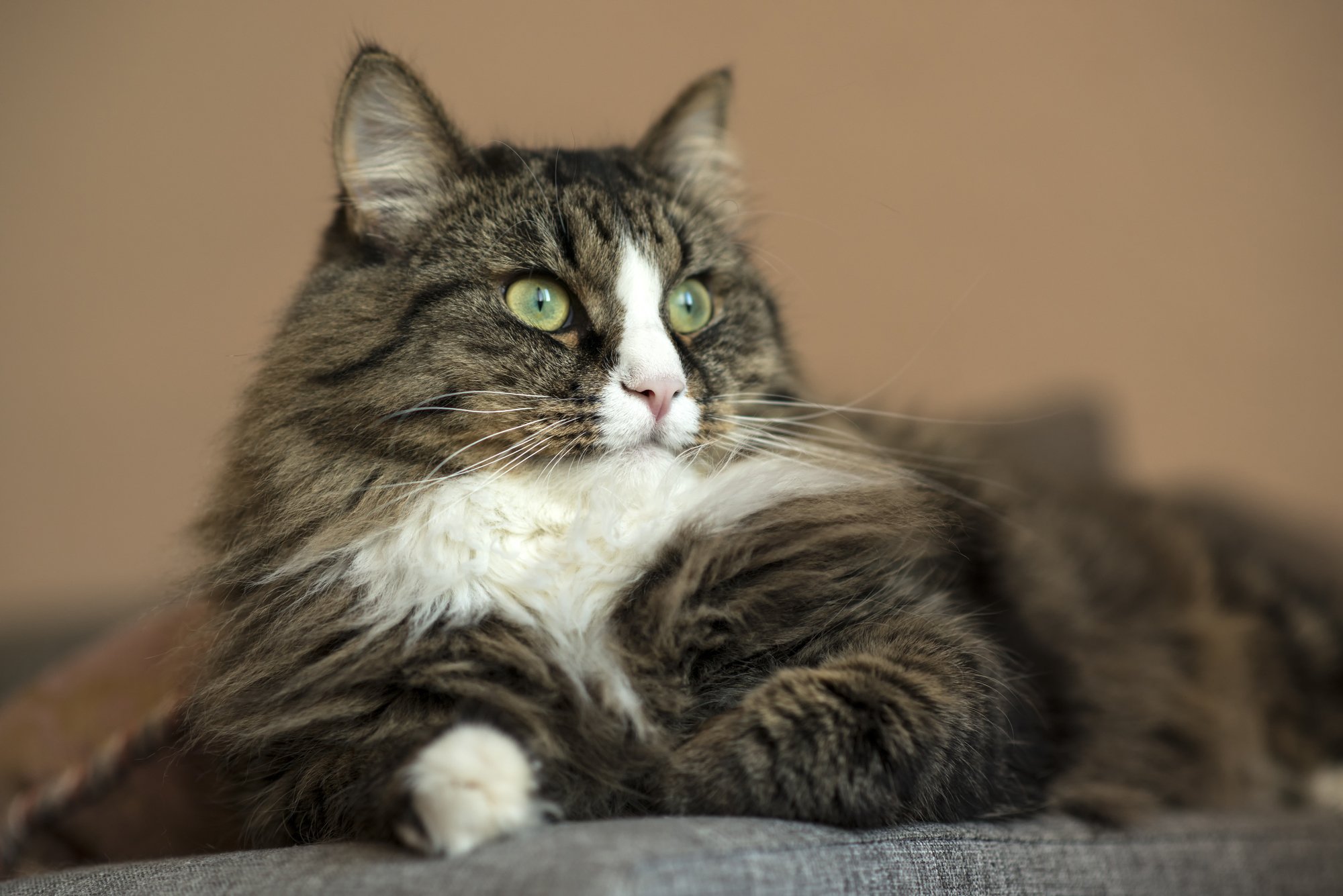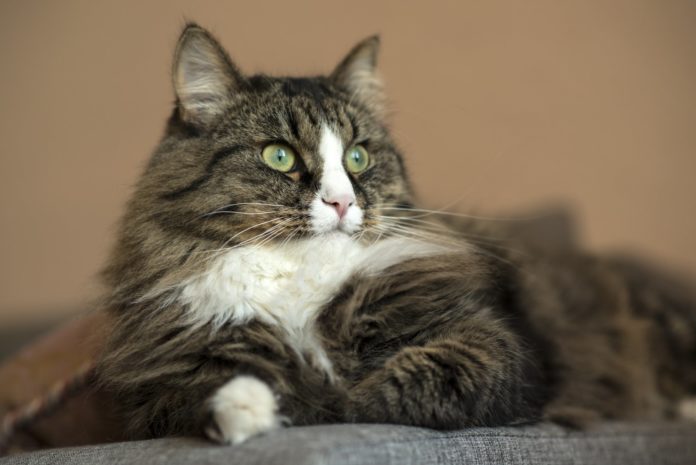
The first signs of a hind-end problem can be subtle. You probably will not see an obvious limp. You might suddenly realize that you have not had to scold the cat off the counter in a week or more. Or you might notice that the first-floor litter box is “getting all the action” while the one up (or down) the stairs is pristine. These are often indications that your cat is experiencing some degree of arthritis, possibly even hip dysplasia (see also “Cats Hide Signs of Hip Dysplasia” from our May 2018 issue at catwatchnewsletter.com).
Rear-end lameness can also arise acutely. Your indoor cat who snuck out the back door may come home limping badly or even dragging her rear. Hit-by-car trauma is the most common cause of pelvic and rear-leg fractures. Cats can also injure legs by getting a leg stuck in a railing when they go to leap or by landing badly from a high spot. Spinal trauma and cat-fight abscesses can show up as rear-leg lameness as well.
Another acute cause of hind-leg lameness is aortic thromboembolism (ATE), which is a clot that most commonly originates in the heart and travels through the aorta to its termination near the hind limbs, blocking blood supply to this region of the body. This is most commonly seen in cats with hypertrophic cardiomyopathy (HCM), a disease of heart muscle that is the most commonly diagnosed heart disease in cats. ATE is painful, and cats may vocalize while being extremely weak or even paralyzed in the rear.
Acute onset of severe lameness/paralysis in any limb or combination of limbs is an emergency, and cats demonstrating this sign should be brought to a veterinarian immediately.
First Aid
With any lameness, start checking your cat out from the bottom up. A torn nail or burnt pad, such as from leaping onto the stove before it has totally cooled down, can be quite painful. Cats with these injuries may hold up the affected leg or use it gingerly.
Gently palpate up the cat’s leg, feeling for any crepitus (crackly sound) from a fracture, swelling that may indicate an abscess or edema, or changes in temperature. Gently flex and extend the cat’s joints to see if you can isolate the painful area.
A cool leg and/or paw may suggest problems with circulation, such as thromboembolism. Increased warmth may indicate an abscess or infection. If you feel a temperature change or a difference between the two rear legs, you should call your veterinarian to schedule an examination immediately. Luckily, you usually have a “normal” leg for comparison.
Again, if your cat is dragging her rear end, it is likely that both legs have significant problems, and you should call your veterinarian immediately and plan to head to the clinic ASAP.
At the Clinic
Surgery is often not an option for pelvic fractures in cats. There is a saying that in cats, “If you get the ends of two broken bones in the same room, they will heal.” While cats aren’t quite this amazing, many, if not most, pelvic fractures will heal reasonably well with crate rest. During this time, you may need to assist your cat with urination and defecation due to associated nerve damage and pain, but many cats recover amazingly well.
Once radiographs indicate healing, careful rehabilitation can bring most cats back to a relatively normal, pain-free existence. Arthritis may develop over time and require the use of pain medications and/or anti-inflammatories for comfort. Joint supplements, such as chondroitin and glucosamine or omega 3 fatty acids, may also help to slow the development of arthritis.
Fractures of the rear leg may require surgery. Severe cases may even necessitate amputation of a leg. Don’t despair—cats handle amputations much better than people. They have none of the mental stress that a human amputee suffers and their lighter, athletic bodies quickly adapt to the loss of a limb.
ATE resulting from HCM requires stabilization, treatment of underlying heart disease, and prevention of further embolism.
Your veterinarian will evaluate the degree of blockage by the embolism. While drugs to break up clots are available, their use in cats is commonly associated with adverse effects, and in most cases, the goal of treatment is to prevent the further formation of clots and to allow the cat’s own biochemistry to gradually break down existing clots. Sadly, the prognosis is guarded-to-poor for cats with ATE.
Cats who survive the initial phase of ATE may require nursing care and rehabilitation to get back on their feet. Sadly, up to 25 percent of them will suffer another clot, even with anti-clotting medications such as aspirin or clopidogrel (Plavix). Many cats end up being euthanized upon diagnosis of ATE due to its relatively poor prognosis.
Take-Home Message
For any hind-limb lameness or injury, a plan for rehabilitation is important. Many of the techniques used for canine sports medicine can be adapted to cats. Some cats even come to enjoy an underwater treadmill session. Judicious use of treats and toys can entice your cat to “work out” on balance equipment. Gentle massage may help with range of motion exercises to extend and flex injured joints. Many cats recover amazingly well from hind-end injuries, even if they need a few restrictions or added supplements.



